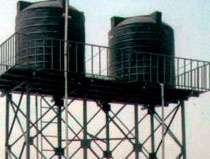Welcome
We do drip irrigation in green houses and this has proven to be very effective as has increased productivity for farmers immesnsely. With the use of irrigation practices, our farmers are capable of doubling productivity so that we have food security for our people and a surplus for export.
 |
 |
 |
Many different technologies and techniques are used for water collection and distribution for small-scale irrigation in Kenya, including rainwater harvesting, bucket irrigation, gravity fed sprinkler and drip, treadle and pedal pumps, rope and washer, motorized pumps, windpower and construction of small earthen dams.
The income gains from commercialized farming through small-scale irrigation in Kenya are impressive. The average smallholder on 2-3 ha of rainfed land makes less than US$ 750 farm income. Compare this with per hectare gross margins of US$ 1 400 for snow peas and French beans, US$ 450 for kale and US$ 600 for onions. These farmers get 2-3 crops a year.
Several constraints however affect farmers;
1) Lack of water- this is where we come in to assist with identification and provision of irrigation water
2) Lack of finances: equipment costs, especially motorized pumps, are still high. Most equipment require a substantial cash outlay. Small farmers do not have collateral to safeguard loans either from the government agricultural finance corporation or from commercial banks. NGOs have in recent years, provided small loans to groups whose collateral is peer pressure, but these do not have sufficient capital to expand.
3) Marketing: crops are marketed in many ways: directly by farmers to consumers in local markets, through cooperatives, through middlemen, and through export contracts. Except when farmers have firm contracts with exporters, there are big risks. Market information is lacking so that farmers who transport their produce to a distant town may find the market flooded.










